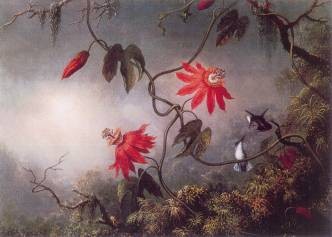Darwin
05 Feb - 03 May 2009
DARWIN
Art and the search for origins
In 1859, Darwin published his landmark book “On the Origin of Species.” Artists soon reacted not only to Darwin’s theories of the origin, survival, and evolution of species, but also to his supporters’ and critics’ interpretations of them. In America, Martin Johnson Heade translated into paint Darwin’s vision of nature as an “entangled bank,” whose beautiful appearance detracts attention from the fight for survival actually raging there. In Germany, Arnold Böcklin began to depict water beings endowed with human features and gestures, while in France Odilon Redon developed his vision of the world’s origin from watery depths. Alfred Kubin’s bizarre chimeras attest a more menacing version of evolution. In 1919, Max Ernst began to make novel scenes of “deep time,” collages and paintings inspired by illustrations in popular science books that questioned not only the origins of life but, from 1933 on, the future of mankind.
Curator: Dr. Pamela Kort
Art and the search for origins
In 1859, Darwin published his landmark book “On the Origin of Species.” Artists soon reacted not only to Darwin’s theories of the origin, survival, and evolution of species, but also to his supporters’ and critics’ interpretations of them. In America, Martin Johnson Heade translated into paint Darwin’s vision of nature as an “entangled bank,” whose beautiful appearance detracts attention from the fight for survival actually raging there. In Germany, Arnold Böcklin began to depict water beings endowed with human features and gestures, while in France Odilon Redon developed his vision of the world’s origin from watery depths. Alfred Kubin’s bizarre chimeras attest a more menacing version of evolution. In 1919, Max Ernst began to make novel scenes of “deep time,” collages and paintings inspired by illustrations in popular science books that questioned not only the origins of life but, from 1933 on, the future of mankind.
Curator: Dr. Pamela Kort

